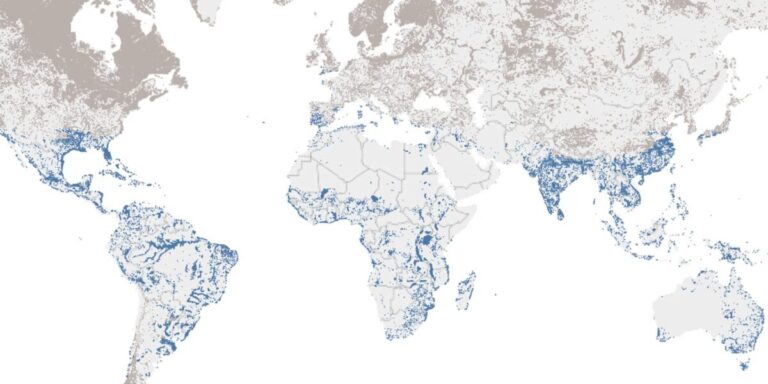An international research team has assessed the global status and potential of the domestic floating photovoltaic (FPV) installations, including analysis of the use of trackers and bifacial solar panels.
An international research team has assessed the global status of the domestic floating photovoltaic (FPV) installations to support the decision -making of FPV investments, including discussions about the use of trackers, various tilting angles and bifacial solar panels to increase the yield.
The research provides insights into the status of the use of FPV systems worldwide and includes the use of trackers and bifacial panels, according to Carlos D. Rodríguez-Gallegos, corresponding author of the research. The insights relate to electrical performance and yield, but also the FPV influence on water and electricity savings for several countries.
“This was made possible by making use of the largest global databases of FPV installations, more than 1,100 systems from 2022, applied in addition to the largest global reserve database in FPV,” said Rodríguez-Gallegos PV -Magazine.
The research team indeed used a Solar Energy Research Institute of Singapore (SERIS) FPV Global Database of Inland Commercial Installations with 1.142 systems from 2022, and they used a different database of reservoirs, both of course and artificially, maintained as part of the Seris Geographic information system ( GIS) Platform, with a total area of 2,220,623 km2.
Referring to the Seris FPV Global Database, the group said that it had been maintained by Seris for more than eight years, and that it is “probably the largest database of its kind” because it contains the information about FPV systems in the operation of in total 5.9 GW through the end of 2022.
The researchers discovered that almost 90% of the installed FPV capacity is in Asia and that the most important country for FPV China is with “almost half of the cumulative installed” capacity. “The dominance of East Asian regions, namely the mainland of China, Taiwan, Japan and South Korea, is due to their attractive feed-in rates, ambitious goals for renewable energy consumption and regulations that favor FPV. Nevertheless, other regions, namely India and Israel, have been catching up since 2019 and are now in the top 10 regions, “they said.
It was also noted that since 2013 “the median size of FPV plants has grown from 0.09 MW to 1.40 MW in 2022, while the median power density has increased from 82 W/m2 to 123 W/M2 in the same time frame. “
The team analyzed the historical trends in FPV system size, float types and suppliers. They noted that the China-based Sungrow and the French-floating PV specialist Ciel et Terre had delivered more than 100 projects towards the end of 2022, but based on the average project size Sungrow, more than three times larger at 9.4 MW was more than three times larger .
The decreases of the installation costs are under time. “We have noticed that FPV systems can be economically viable under the right project conditions. For example, one project in India had a Capex as low as $ 0.41/W, which shows that FPV can be competitive with other options for renewable energy, “said Rodríguez-Gallegos.
The group investigated the global FPV potential in terms of capacity, energy production and water saving for a variety of tilting corners, tracking configurations, as well as the use of bifacial panels. For example, they mentioned ten different types of FPV setups with a variety of fixed tilt corners, follow horizontal and vertical axis, single and dual-axis and various orientations.
It estimated that by “installing FPV on 10% of the area of 249,717 domestic reservoirs, the FPV capacity could reach up to 22 TW and the entire global electricity consumption and a maximum of 5% of the world demand in the world could fulfill.”
Looking ahead, the researcher said that the group is planning to concentrate on offshore FPV applications, investigating “energy potential, design considerations, costs and operational and maintenance (R&M) challenges.”
The paper “Global floating PV status and potential“Is published in Progress in energy. It had contributions from researchers from Singapore’s Seris and the National University of Singapore (NUS), as well as Escuela Superior Politécnica del Litoral in Ecuador, Hong Kong Polytechnic University, Concordia University, Canada and Dakin University, Australia.
This content is protected by copyright and may not be reused. If you want to work with us and reuse part of our content, please contact: editors@pv-magazine.com.


